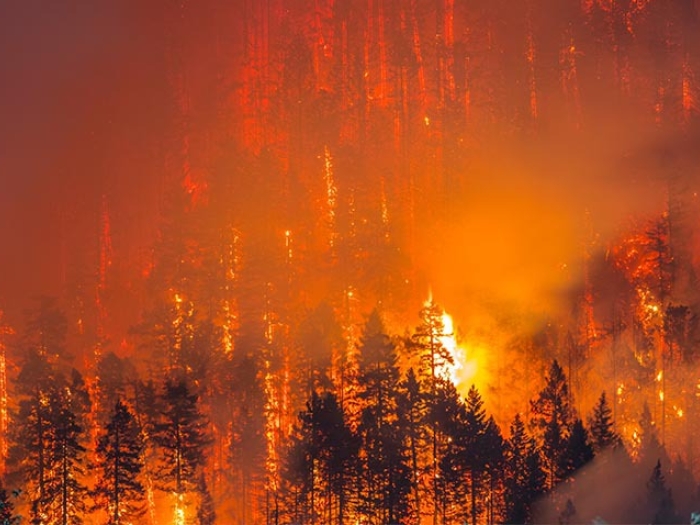Treating them early makes a huge difference.
5:00 AM
Author |

Nearly four months after tearing his Achilles tendon, Russian gymnast Artur Dalaloyan returned to competition, a move already dubbed "heroic" and "miraculous" before he helped his squad earn an Olympic team gold medal in Tokyo.
It took American basketball superstar Kevin Durant a full season to recover from an Achilles tear in the 2019 NBA Finals.
But injuries to the body's strongest, thickest tendon have also crippled the careers of professional and amateur athletes alike. Achilles injuries account for around 30% of total injuries diagnosed in sports, most often occurring among active, middle-aged men.
MORE FROM MICHIGAN: Sign up for our weekly newsletter
During June of 2021, as many Americans started spending more time outside, physicians at Michigan Medicine diagnosed more Achilles ruptures than they did in all of 2020.
While there is no definitive answer as to why the injuries shot up, many are attributing it to a return to activity after a year of inactivity during the height of the pandemic, said Adam Abraham, Ph.D., a research investigator in the Department of Orthopaedic Surgery at Michigan Medicine.
"Getting back into the summer with people getting back outside, a lot of people wanted to get back in shape and get their 'pre-COVID bodies,'" Abraham said. "Soft tissues don't respond to exercise as fast as muscle and bone, and they struggle to adapt on the return."
Orthopaedic researchers at Michigan Medicine are currently looking for a possible biological explanation for the injury spike, retrieving tissues from injured patients to examine any shifts in their gene expression.
"The increase in cases provides an opportunity to better understand the biological mechanisms that drive tendinopathy and may help us develop new therapies to help patients broadly," Abraham said.
Understanding different types of Achilles injury
While there is much to learn about the injury surge, it is important for people to know the signs of Achilles damage and when to seek medical attention, which can make all the difference for recovery, said James R. Holmes, M.D., service chief of foot and ankle and associate professor of orthopaedic surgery at Michigan Medicine.
Three common types of Achilles tendon injury
Tendinitis
This is the most common injury, which occurs when the sheath of the Achilles becomes inflamed, often through overuse.
"These may happen as a result of a training error when someone is doing too much too fast," Holmes said. "It's occasionally associated with walking up the step of a steep incline, but overuse is often the major issue for young-to-middle-aged people."
A person with tendinitis will feel the pain when moving the ankle. They may also experience tenderness in the area and some swelling.
Tendinosis
This injury is not a result of inflammation, rather a degenerative condition in which the tendon's collagen deteriorates. More than tendinitis, middle-aged people experience this injury.
"I tell patients: tendinosis is to tendons what arthritis is to joints," Holmes said. "This degenerative process can be at the insertion, where the tendon attaches to the heel bone, or it can be further up the tendon, or proximal."
Engaging and educating patients about their problem, the options available for treatment and the basis for your recommendation is paramount to a successful outcome and return to function.James R. Holmes, M.D.
Tendinosis can often be confused with tendinitis, its more commonly diagnosed counterpart. Physicians may utilize a musculoskeletal ultrasound or MRI to distinguish between the two in patients.
"Classically, the two conditions have been considered distinct," Abraham said. "However, more recent laboratory studies have blurred the lines between these conditions. This really highlights how much we still must learn about tendon biology."
Achilles rupture/tear
This may happen during a pickup basketball game at the park, while running after a toddler or playing tennis. A person plants their feet, pushes off and hears a pop.
"This happens almost universally," Holmes said. "They look behind to see who hit them because it may feel like a chop to the back of the leg. This tear classically occurs in middle-aged weekend warriors. You see it in athletes, for sure, but it's typically a mid-40s guy who plays court sports."
Much more rarely, he noted, the Achilles tendon tears off the attachment on the calcaneus, or heel bone. This problem is more often associated with preceding steroid injections in the region or advanced degenerative changes at the attachment causing significant weakness.
SEE ALSO: Tackling Torn Tendons
When to see a doctor about your Achilles tendon
For tendinosis and tendinitis, continued aggravation and prolonged pain that does not subside should indicate it's time to see a physician.
In the case of a tear, the injury may not feel incredibly painful, which can be a problem, Holmes said.
"People try to walk them off; it doesn't hurt that much, and you can walk on it," he said. "That's a big concern though because if you continue to walk on it and do not get treatment after a day or two, the muscle will often pull unopposed and create more of a gap between the two ends of the tendon."
If a person hears or feels that pop or chop feeling in the back of the leg, even if the pain is minimal, they should visit a doctor.
Achilles tendon injury treatment options
For Achilles tears, there is evidence to support both operative and non-operative management depending on a variety of circumstances. This includes, but is not limited to, individual patient factors, timing from injury to treatment initiation, amount of tendon gap and medical comorbidities.
The non-operative treatment option is to brace the injured leg and follow up with physical therapy to build back strength in the limb. In other cases, physicians will opt for surgery, which aims to promote healing by triggering the body's natural reparative response after cleaning out the degenerative tissue that may be inhibiting a patient's progress.
Like Podcasts? Add the Michigan Medicine News Break on iTunes or anywhere you listen to podcasts.
For tendinosis and tendinitis, rest and the occasional heel lifts are usually recommended. But there is no one-size-fits all approach to treating these injuries, Holmes said.
"This is a conversation that patients need to have with their physicians to, ultimately, make the best decision for each individual case," he said.
Are Achilles injuries preventable?
While some advocate for stretching, it remains controversial when it comes to Achilles injury prevention. The most successful preventative care is regular exercise and strength training catered to the individual, Abraham said.
"There are very few studies that have investigated the effects of specific prevention strategies," he said. "Aside from catered training, physicians are not recommending people take corticosteroids anymore for long-term pain. While they may relieve some distress, corticosteroids may also prevent the tendons from adapting, and there is limited evidence to support their use."
SEE ALSO: 3 Treatments for Tennis Elbow and Other Types of Tendinopathy
Knowing your limitations and understanding your pain is the first step towards prevention. Unfortunately, Holmes noted, sometimes there is nothing to do about bad luck. Despite the lack of any early signs of worsening injury or training errors, a random event may result in a complete tear.
"Engaging and educating patients about their problem, the options available for treatment and the basis for your recommendation is paramount to a successful outcome and return to function," Holmes said. "Patient education is an absolute requirement in the treatment of this and all other injuries, and it is something in which we pride ourselves."

Explore a variety of health care news & stories by visiting the Health Lab home page for more articles.

Department of Communication at Michigan Medicine
Want top health & research news weekly? Sign up for Health Lab’s newsletters today!





